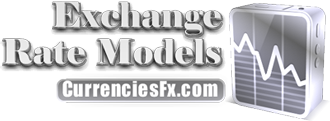Macroeconomics is a branch of economics that studies general economic factors and large-scale events to predict economic behavior and decision-making of the economy as a whole. The three major concerns of Macroeconomics are employment, inflation, and National output.
General Factors Affecting Exchange Rates
Similar to any other financial price, the price of an exchange rate is determined by the forces of demand and supply. The price of an exchange rate reflects many economic and non-economic factors. The most important factors are interest rates, inflation, growth, employment, and political risk.
Five (5) Traditional Exchange Rate Theories
The traditional exchange rate models seek the identification of an equilibrium between two economies to calculate the fair value of the exchange rate. Equilibrium is based on the relative valuation of an identical commodity, relative inflation, the relative level of real interest rates, etc.




